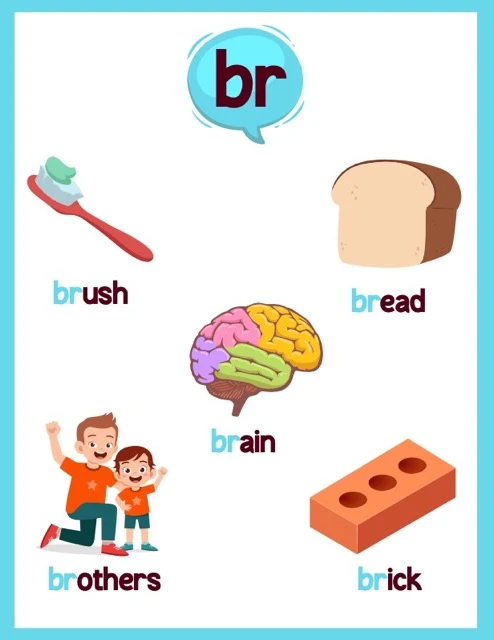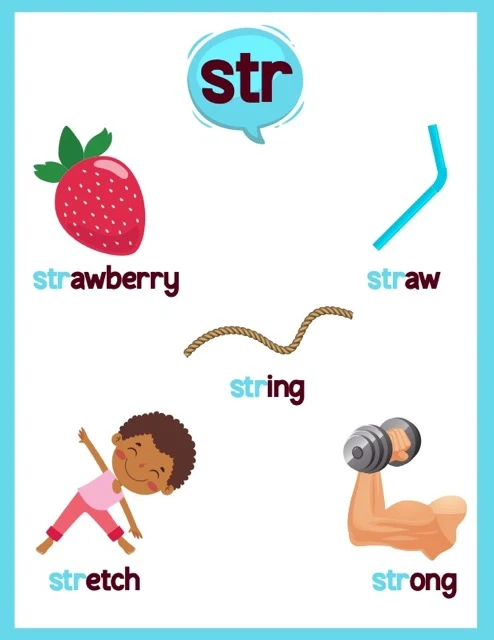Mastering Consonant Blends
These sources offer a comprehensive guide to consonant blends, emphasizing their importance in developing phonemic awareness, a crucial skill for reading and spelling. They explain the difference between blends and digraphs, detailing two and three-letter blend types and their placement in words. Effective teaching strategies, including multisensory approaches and the use of visual aids like the "Testing Theme: Beginning Blends.pdf" chart, are recommended to ensure successful learning. The resources highlight the need for explicit phonics instruction and ample practice opportunities to solidify understanding.
Consonant Blends: A Comprehensive Guide
Briefing Doc: Consonant Blends
Main Themes:
●
Definition and Importance of Consonant Blends: Consonant blends are groups of two or three consonants where each consonant retains its individual sound. They are essential for developing phonemic awareness, a crucial skill for reading and spelling. ("Beginning Consonant Blends FAQ")
●
Distinguishing Blends from Digraphs: It is important to differentiate consonant blends, where each sound is heard, from digraphs, where two consonants combine to form a single new sound. (All sources)
●
Types of Consonant Blends: There are two-letter blends (e.g., "bl" in "blue") and less common three-letter blends (e.g., "scr" in "scratch"). They can appear at the beginning or end of words. (All sources)
●
Teaching Strategies: Various methods can be employed to effectively teach consonant blends, including reading aloud, using picture cards, playing games like "I Spy", and sorting activities. ("Beginning Consonant Blends FAQ" and "Conquering Consonant Blends")
Most Important Ideas/Facts:
●
Phonemic Awareness: Consonant blends are a stepping stone to mastering phonemic awareness – the ability to hear and manipulate individual sounds in words. This skill is the foundation for decoding (reading) and encoding (spelling). ("Conquering Consonant Blends")
●
Explicit Phonics Instruction: Direct teaching of phonics, including consonant blends, is crucial for all learners, particularly those struggling with reading. ("Conquering Consonant Blends")
●
Multisensory Learning: Engaging activities that cater to different learning styles, such as those incorporating visuals and kinesthetic elements, are effective for teaching consonant blends. (Implied in "Conquering Consonant Blends")
●
Resources: The "Testing Theme: Beginning Blends.pdf" provides a comprehensive visual chart illustrating various consonant blends with corresponding image examples. This resource, along with online games, worksheets, and educational apps, offers ample opportunities for practice.
Quotes:
●
"Mastering consonant blends is a key step in developing phonemic awareness, the ability to hear and manipulate individual sounds in words." ("Beginning Consonant Blends FAQ")
●
"Understanding consonant blends is crucial for young readers as it strengthens their phonemic awareness...essential for both decoding (reading) and encoding (spelling)." ("Conquering Consonant Blends")
●
"In a consonant blend, each consonant retains its distinct sound. In a digraph, two consonants combine to create a single new sound." ("Beginning Consonant Blends FAQ")
Recommendations:
●
Integrate the "Testing Theme: Beginning Blends.pdf" chart into lessons and activities for a visual aid.
●
Utilize a variety of teaching methods, including games and interactive exercises, to cater to diverse learners.
●
Emphasize the connection between consonant blends and phonemic awareness in lesson planning.
●
Encourage regular practice through various resources, such as online games and printable worksheets.
Beginning Consonant Blends
Beginning Consonant Blends FAQ
1. What are consonant blends?
Consonant blends are groups of two or three consonants that appear together in a word, with each consonant retaining its individual sound. For example, in the word "blue," the letters "bl" form a consonant blend, and both the "b" and "l" sounds are heard.
2. Why are consonant blends important for early readers?
Mastering consonant blends is a key step in developing phonemic awareness, the ability to hear and manipulate individual sounds in words. This skill is crucial for decoding (reading) and encoding (spelling) words.
3. What are some examples of common beginning consonant blends?
The charts illustrate several common beginning consonant blends, including:
●
bl: blue, blend, black
●
br: brown, bread, brick
●
cl: clap, climb, class
●
fl: flag, fly, flower
4. How can I help a child learn consonant blends?
●
Read aloud: Choose books featuring words with consonant blends and emphasize the sounds of the blends as you read.
●
Picture cards: Use flashcards or charts like the ones provided to introduce and practice different blends.
●
Games: Play games like "I Spy" focusing on objects starting with a specific blend. For example, "I spy with my little eye something that starts with 'br'..."
●
Sorting activities: Provide objects or pictures and have the child sort them by beginning blend.
5. Are there three-letter consonant blends?
Yes, although they are less common than two-letter blends. Some examples of three-letter blends include:
●
scr: scratch, scrub, scream
●
spl: splash, split, splinter
●
str: string, strong, straw
6. What is the difference between a consonant blend and a digraph?
In a consonant blend, each consonant retains its distinct sound. In a digraph, two consonants combine to create a single new sound. Examples of digraphs include:
●
sh: ship, shop, shell
●
ch: chin, chop, child
●
th: thin, that, them
7. Can consonant blends appear at the end of words?
Yes, consonant blends can appear at the beginning or end of words. Here are some examples of ending blends:
●
nd: bend, send, find
●
st: best, first, last
●
ft: left, soft, gift
8. What are some resources for practicing consonant blends?
Besides the charts provided, many online and printable resources are available. Search for "consonant blend activities" or "consonant blend games" for ideas. Educational websites and apps often offer interactive exercises for practicing phonics skills.
Conquering Consonant Blends
Conquering Consonant Blends: A Study Guide
Short-Answer Quiz
Instructions: Answer the following questions in 2-3 sentences.
1.
What are consonant blends, and how are they different from digraphs?
2.
Why is understanding consonant blends important for young readers?
3.
Provide three examples of two-letter consonant blends and the words that contain them.
4.
Give two examples of three-letter consonant blends and words containing them.
5.
Can consonant blends appear at the end of words? If so, provide two examples.
6.
Explain one activity that can help children learn consonant blends.
7.
What is the connection between phonemic awareness and consonant blends?
8.
Looking at the provided chart, identify a blend that makes a /sk/ sound and provide a word example.
9.
Looking at the provided chart, identify a blend that makes a /spl/ sound and provide a word example.
10.
What resources, besides the provided chart, can be used to practice consonant blends?
Short-Answer Quiz Answer Key
1.
Consonant blends are groups of two or three consonants where each consonant retains its individual sound. In contrast, digraphs are two consonants that combine to create a single new sound.
2.
Understanding consonant blends is crucial for young readers as it strengthens their phonemic awareness, the ability to hear and manipulate individual sounds in words. This skill is essential for both decoding (reading) and encoding (spelling).
3.
bl - blue, br - brown, cl - clap
4.
scr - scratch, spl - splash
5.
Yes, consonant blends can appear at the end of words. Examples include nd in "send" and st in "first."
6.
One activity to help children learn consonant blends is playing "I Spy" with a focus on objects starting with a specific blend. For example, "I spy with my little eye something that starts with 'br'..."
7.
Phonemic awareness is the ability to hear and work with individual sounds in words. Mastering consonant blends is a key part of developing this skill, as it involves recognizing and separating the individual sounds within the blend.
8.
The blend sk, as in the word "skate."
9.
The blend spl, as in the word "splash."
10.
Besides the chart, many resources are available, such as online games, printable worksheets, educational apps, and books focusing on consonant blends.
Essay Questions
1.
Discuss the role of consonant blends in developing literacy skills in young children.
2.
Compare and contrast consonant blends and digraphs, providing examples of each and explaining their significance in reading and spelling.
3.
Analyze the effectiveness of different methods for teaching consonant blends, drawing on specific examples and activities.
4.
Imagine you are a teacher introducing consonant blends to a class of first-grade students. Describe a lesson plan that incorporates multiple learning styles and engaging activities.
5.
Explain why explicit instruction in phonics, including consonant blends, is important for all learners, including those who may struggle with reading.
Glossary of Key Terms






























